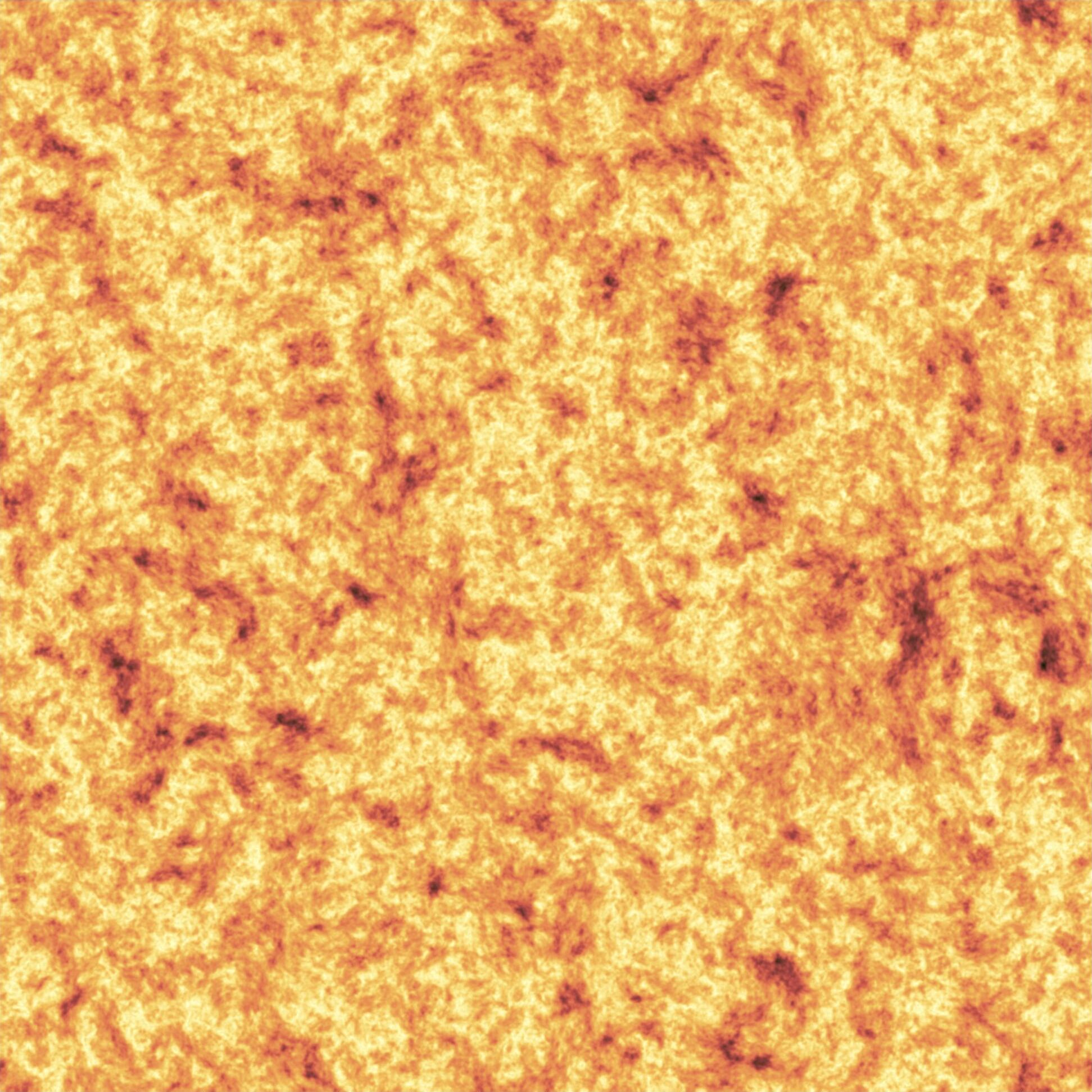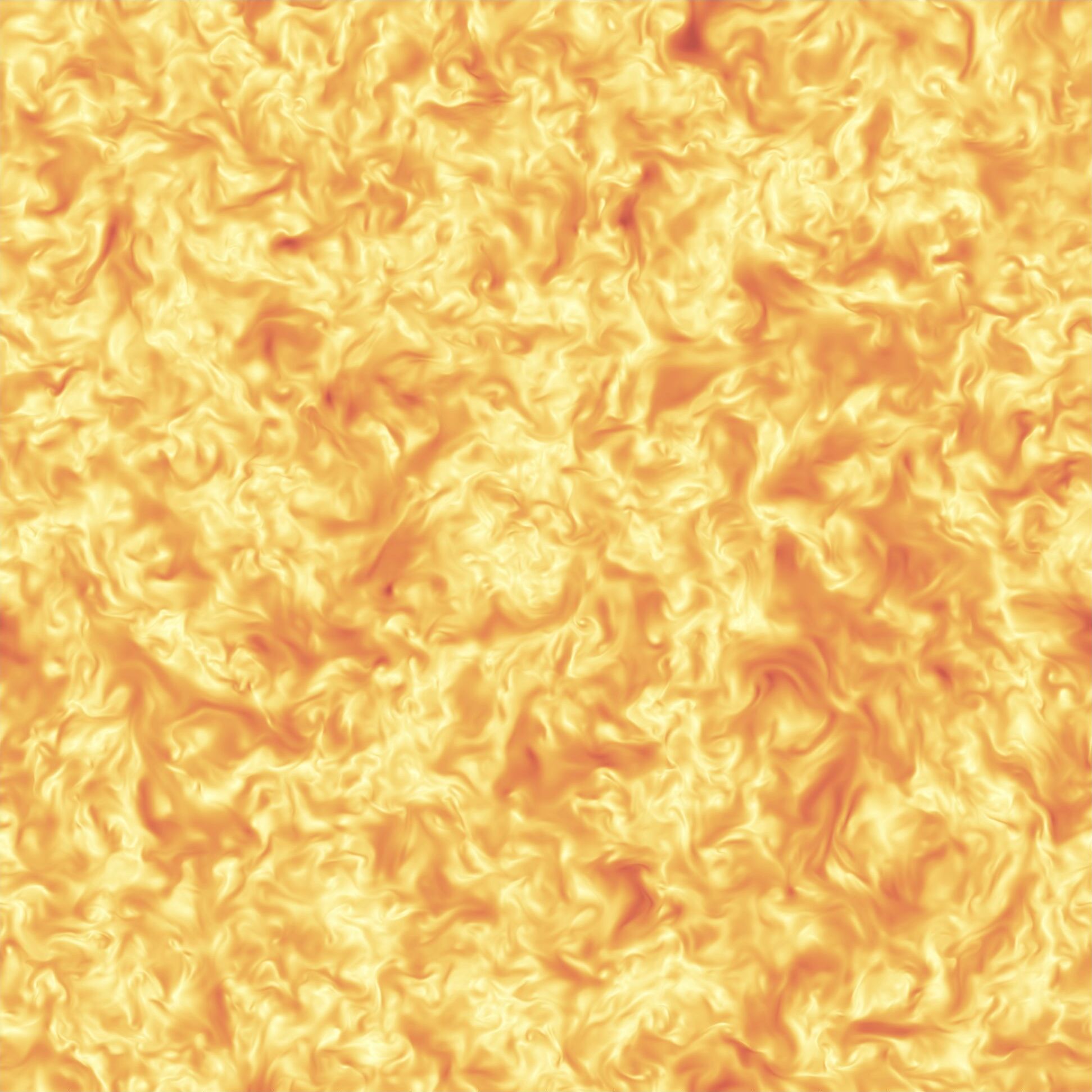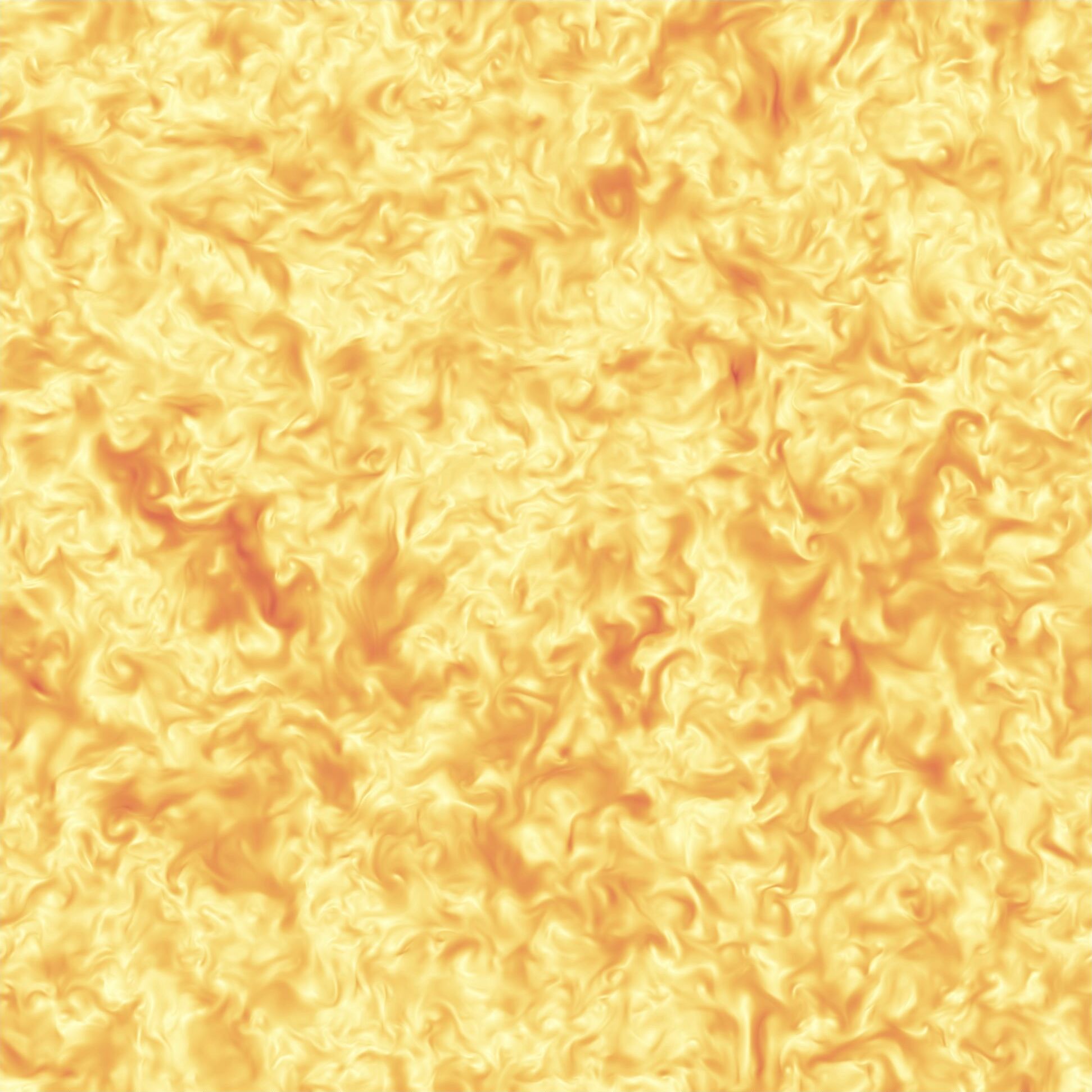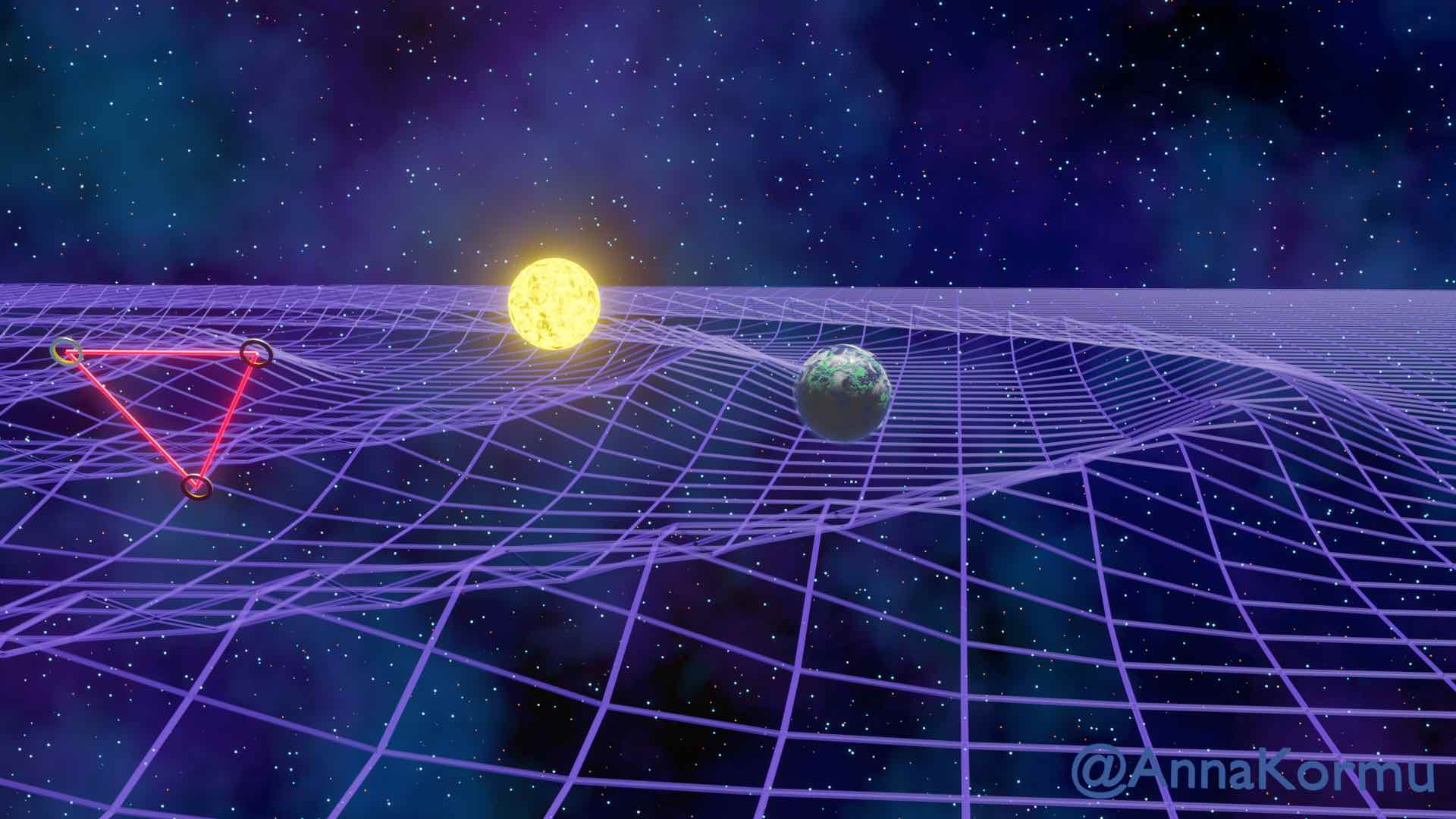About our PRACE project GRaSPT
I created this report after wrapping up our large high performance computing project about strong early universe phase transitions. It doesn't seem to be available anywhere publicly, so I am putting it online here.
I think it gives a nice summary of what our work involves. This particular project faced many setbacks due to us having to improve the code as we went, adapt to changing goals of the project and then understand and model the results. All this, during an unprecedented global pandemic.
The project was a PRACE Tier-0 high performance computing project. We were awarded 47 million hours of CPU time on the Gauss Centre for Supercomputing system Hazel Hen.



Cropped stills from movie of Simulation A' from the paper Generation of gravitational waves from freely decaying turbulence (see References). The start, middle, and end of the simulation is shown. You can see one of the movies further down the page!
Introduction
The early universe was much smaller and hotter than today. A few seconds after the big bang, when the observable universe was a few centimetres across, the Higgs field ‘turned on’. Like the more familiar electric and magnetic fields, the Higgs field is everywhere, and is carried by the famous Higgs boson.
In the so-called Standard Model of particle physics, the Higgs field is thought to have turned on in a very gentle way – a transition known as a ‘crossover’. However, there are several phenomena which may well relate to this transition that we cannot explain with just the Standard Model. For example, we don’t understand why the observable universe is made almost entirely of matter: most particle physics processes do not distinguish between matter and antimatter, and those that we do know about aren’t enough to explain the imbalance that we do see.
There is also the question of dark matter, matter that interacts gravitationally with the observable universe, but which we can’t see. Observations suggest that there is more than five times as much dark matter as observable matter, but we have not been able to detect it here on Earth. Its exact nature remains an open question.
These – and other – unsolved issues lead us to look for simple ways to extend the Standard Model of particle physics. The extensions we consider often lead to a more dramatic phase transition at the time in the universe’s history when the Higgs was turning on, rather than just a crossover. Indeed, to generate the sort of matter-antimatter asymmetry that we see, such a period out of equilibrium is likely to have been necessary.
If the early universe underwent a phase transition, it would involve bubbles of the new phase (where the Higgs is ‘on’) nucleating as bubbles growing in the old phase (where the Higgs was ‘off’) – much like drops of liquid water form in clouds of water vapour. These bubbles would grow and eventually merge.
When water condenses, it gives off latent heat, which is radiated away as it cools. Bubbles in the early universe would also liberate energy (analogous to latent heat), which would go into heating the plasma of all the fundamental particles of the Standard Model that would have been present at the time. This heating would happen around the bubble walls, forming outward-moving heated fronts of plasma. After the bubbles of the new Higgs phase merged, the fronts would continue to move as sound waves through the universe.
If something like this happened in the early universe, we would be able to see echoes in a background of gravitational waves all over the sky – and conversely, if we do not see such a background, it puts strong constraints on the physics that could have happened back then.
In particular, the overlapping plasma sound waves would be an efficient source of gravitational waves. Simulating their behaviour and the resulting gravitational wave production accurately was the goal of our previous PRACE project hosted by GCS. But the sound waves themselves are only half the story.

An artist's impression by Anna Kormu of the LISA mission orbiting the sun, detecting gravitational waves. Used here with permission. For further information please visit her page.
Turbulence in the early universe
Left for long enough, sound waves will steepen and turn into shock waves. This is due to dissipation – microscopic viscous processes in the plasma which remove kinetic energy. In general, the more kinetic energy in the plasma, the more rapidly these shocks can form.
The purpose of this PRACE project was to investigate the physics of strong transitions (where a lot of energy is released during the transition). Strong transitions are more likely to quickly lead to turbulent physics, so a lot of our work in this PRACE project consisted of understanding the development of turbulence.
Turbulence in the early universe is a bit different from that experienced in modern everyday life. For example, a bumpy plane ride is a result of turbulent air masses, part of the complicated system of weather here on earth. The sun heats the atmosphere, providing a continuous source of energy to drive the chaotic systems of weather including turbulent air masses in the upper troposphere. In contrast, no energy is being fed into the early universe systems we are studying – once the phase transition is completed, no more energy can be liberated.
This dissipation of energy in the plasma of the early universe by turbulent motion is termed freely decaying turbulence. For strong enough transitions (where enough kinetic energy is produced at the start), this is how the sound waves will dissipate: they will generate a turbulent flow which will then cascade to smaller and smaller scales before disappearing altogether.
In this project we investigated how this process of freely decaying turbulence sources gravitational waves. Turbulent flows can be less efficient at sourcing gravitational waves than sound waves, and an overly cautious approach adopted by many groups until now has been to assume that turbulence does not source gravitational waves at all. We used our results to develop and refine analytical models for gravitational wave production by turbulent flows. These are important, because we cannot run a new, expensive, simulation every time we want to predict what happened for a particular particle physics scenario.
Movie of Simulation D from the paper Generation of gravitational waves from freely decaying turbulence (see References). You can find (and cite) this movie and others on Zenodo:
Outlook
We are starting to understand how, and to what extent, turbulence would have sourced gravitational waves in the early universe. There still, however, remains much to do. So far, we have studied the collisions of the bubbles and resulting sound waves separately from the later formation of turbulence, mostly because the simulations would take too long if we tried to do everything in one go. Furthermore, the volume of space we need to simulate to see all the physics we care about is so big, we cannot easily save the state halfway through and continue the simulation later.
In order to split the simulation as we have, we make certain assumptions about how the sound wave-dominated plasms looks soon after the transition, and we feed those assumptions in to make our initial conditions for studying the onset of turbulence. A crucial future step will be to put those assumptions to the test and study every stage of the transition in one go.
Investigations are also ongoing to see how a strong phase transition signal will really look to the LISA detector. It’s important to work out how we can tease a weak, stochastic cosmological signal out from a dense foreground of gravitational waves produced by astrophysical objects like binary stars. These studies go hand in hand with efforts to better understand the gravitational wave background signal itself, such as our work in this PRACE project.
Team
Principal investigator
David J. Weir: Department of Physics and Helsinki Institute of Physics, University of Helsinki (Finland)
Other team members
(affiliations at time of writing [Jan 2023], or [for Daniel Cutting] last academic affiliation prior to moving to industry)
- Pierre Auclair: Institute of Mathematics and Physics, Louvain University (Belgium)
- Chiara Caprini: Département de Physique Théorique, Université de Genève (Switzerland) and CERN (Switzerland)
- Daniel Cutting, Kari Rummukainen: University of Helsinki (Finland)
- Mark Hindmarsh: University of Sussex (UK) and University of Helsinki (Finland)
- Danièle A. Steer: Laboratoire APC, Université Paris Cité (France)
References
- Pierre Auclair, Chiara Caprini, Daniel Cutting, Mark Hindmarsh, Kari Rummukainen, Danièle A. Steer, and David J. Weir, Generation of gravitational waves from freely decaying turbulence, JCAP 09 (2022) 029 [arXiv:2205.02588]
- [Also using PRACE resources from this project:] Daniel Cutting, Essi Vilhonen, and David J. Weir, Droplet collapse during strongly supercooled transitions, Phys. Rev. D 106, 103524 (2022) [arXiv:2204.03396]
- Zenodo record with turbulence movies: DOI 10.5281/zenodo.7492931.
